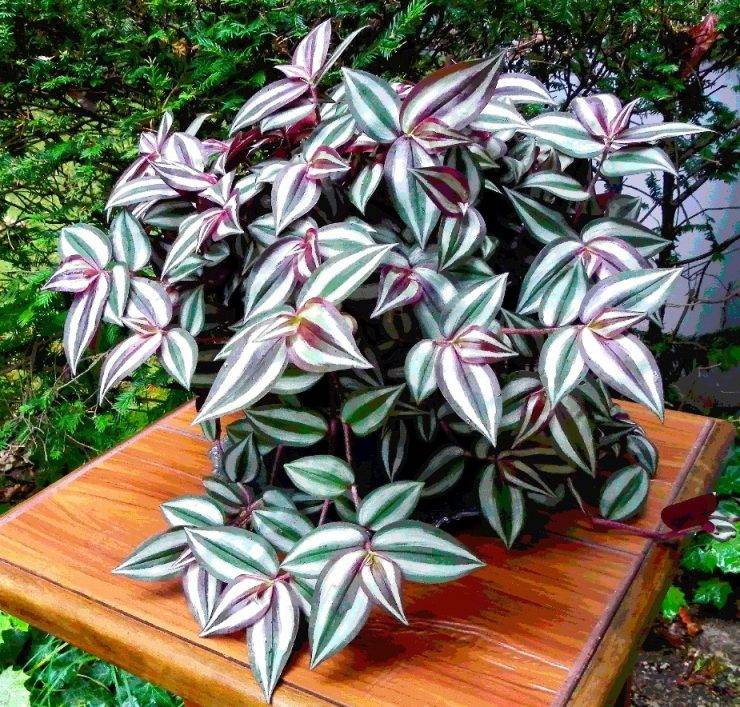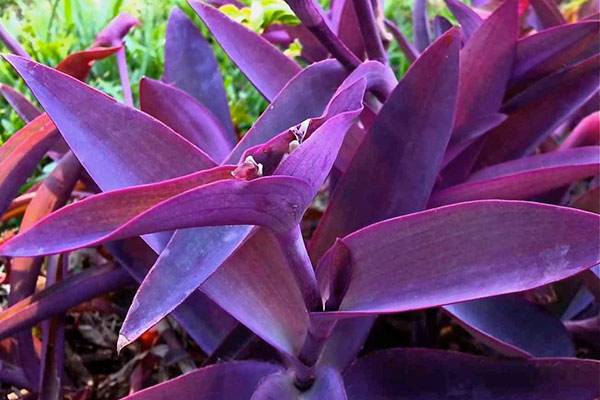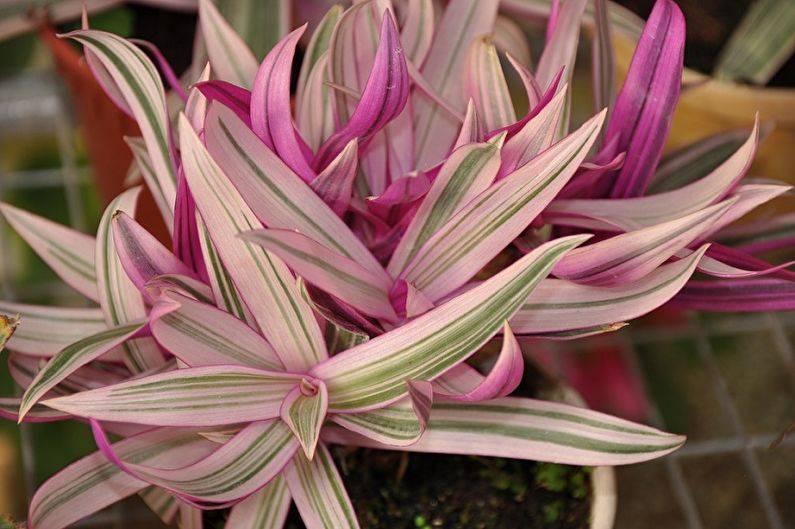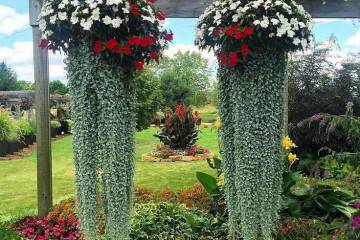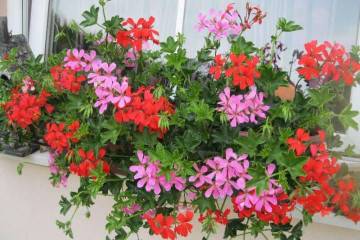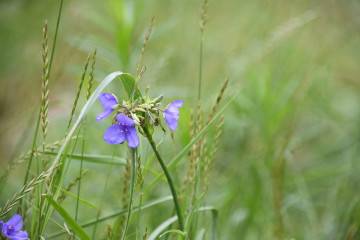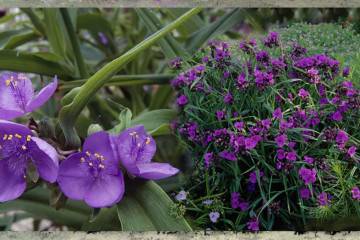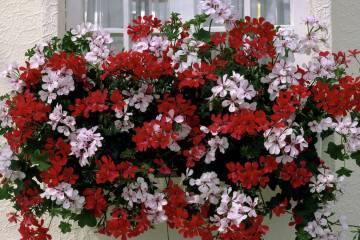Flower tradescantia ampelous: what is this flower
Content:
Tradescantia is a common plant. This is a bright representative of the Kommelinov family. There are about 30 species in this genus, found both in tropical forests and in the temperate climatic zone of the American continent.
Flower tradescantia indoor ampelous - botanical description
The plant got its name in honor of the English gardener John Tradescant, who served King Charles I. This plant was first described by a gardener. In the common people, it received a different name - woman's weaves or saxifrage, due to its long lashes, intertwined with each other. It is very difficult to find their beginning and end immediately.
If you find out what Tradescantia is and what conditions it needs, it will be easier to grow it at home. This is a medium-tall plant that lives for many years. Has creeping or straight stems. The sheet plates are arranged alternately. They can be of various shapes - lanceolate, elliptical, ovoid. It all depends on the species. Inflorescences are formed in the area of the sinuses of the leaf-shaped plates.
Is it possible to keep Tradescantia at home
It is ideal as a home plant. It is convenient to place the pot with it on high shelves or in a planter. This allows the long stems to hang freely.
In the process of flowering, a bluish or purple peduncle begins to form, which adorns the bush.
The plant is widely used to transform aquariums, positioning it so that the grown stems are immersed in water. As a result, it forms a spectacular green rug on the surface of the water.
It is also an excellent healer. The sap of the plant has a lot of useful properties. During photosynthesis, the air in the room where it lives is purified. In addition, myrtle leaf tradescantia, like other species, is capable of neutralizing radiation harmful to human health.
Plant care
The houseplant is completely unpretentious in terms of care - it feels great at any temperature. Loves places with good lighting, which gives the leaves a rich hue. Fluffy tradescantia, purple or pink - all lack of sunlight leads to the fact that the leaves become pale. Some varieties with variegated leaf color become monochromatic.
Optimum temperature indicators for comfortable flower growth are from 24 to 26 degrees. In the winter period, the state of dormancy for the plant occurs at 12 degrees. Lower temperatures lead to strong elongation of young shoots. The flower almost completely loses its decorative effect.
Reproduction of Tradescantia occurs by dividing the rhizomes or cuttings. In the wild, it grows in swampy areas, which provokes the love of indoor flowers for abundant watering.In the summer, the flower requires watering - it is impossible to allow the earthy clod to dry out. In winter, watering is done 2 times a week.
When growing an ampel plant, it is necessary to monitor the humidity of the air. The optimum moisture content is about 60%. To prevent the possibility of decay of the root system, the earthen lump must be loosened regularly. It is also important to apply mineral fertilizers intended for indoor flowers.
Variety of species and varieties
There are many varieties of Tradescantia that, if well cared for, will decorate your home. The most popular ones are described below.
Tradescantia purple
It is a perennial herb with highly branched shoots, located directly or lying on the surface of the earth. This species got its name because of the specific color of the leaves. They are in a lilac plant with a pubescent one side. It blooms with small crimson flowers.
Riverside Tradescantia
This species is native to Brazilian forests. The stems are colored red and also have green spots. The leaves are ovoid, small, due to which the name small-leaved. The leaves are red below and green above. The riverine varieties are Variegata and Quick Silver.
Tradescantia variegated
This is an extraordinarily beautiful plant. It is unpretentious in care, pleases its owner with bright colors. Sometimes it is called white-green Tradescantia. A feature in the care of variegated leaves is the individual selection of fertilizers. A large amount of applied mineral fertilizers leads to a sharp growth of the plant, the color is lost and the overall beauty of the flower is disturbed.
Tradescantia white
The white-flowered variety is also called tricolor or uridis. Her homeland is the region of South America. This type is characterized by creeping stems with wide ovoid leaves located on them. They are pointed at the top. The color of the leaves can be silver or green. A glossy sheen is often observed. It blooms with small white flowers.
Tradescantia Nanook
A unique flower variety with a large amount of white on the leaves. When looking for a place for it, it is recommended to select partial shade, with moderate indirect light. The optimum temperature in the room when keeping the Nanook variety is 15-20 degrees. Like all other varieties of Tradescantia, he loves abundant watering.
Tradescantia pink
Another name is shy bride. It is an interspecific hybrid. Feels good under any conditions. She prefers cool and well-lit places in the house.
The soil for planting is selected slightly acidic with the addition of needles or peat. A shy bride is more of a garden plant than a home plant, so all its beauty is manifested in an open field with sufficient moisture.
Like most green plants on the planet, Tradescantia is a real living filter, ridding indoor air of harmful vapors and additionally moisturizing it. The lush potted variety has been proven to neutralize electromagnetic waves, and some houseplant lovers attribute real magical powers to it.
The milky juice contained in the stems and leaves of the tropical beauty has a pronounced disinfecting effect. In the countries where the flower comes from, people use the sap of the plant to disinfect wounds, cuts and in the treatment of skin diseases.
